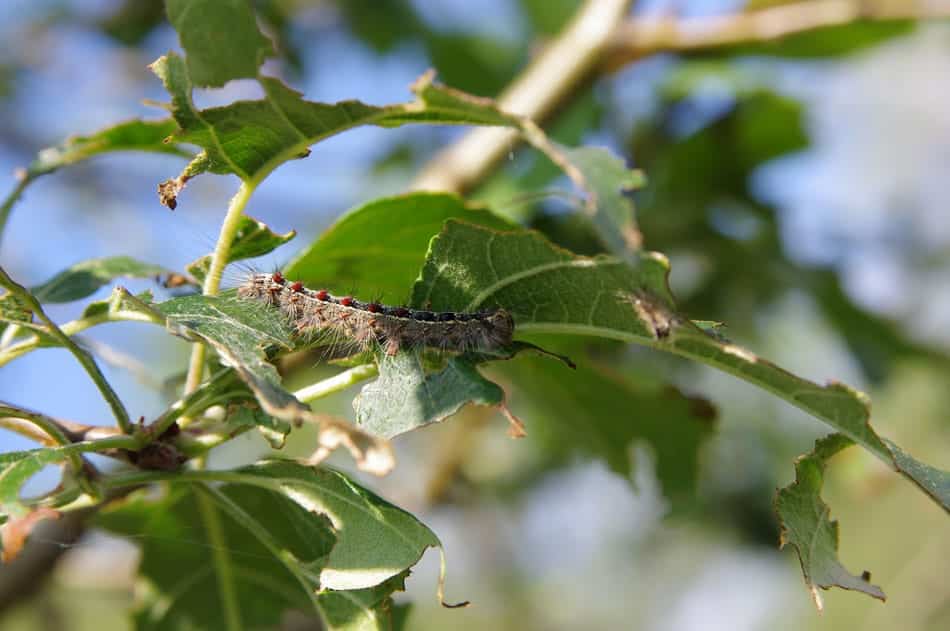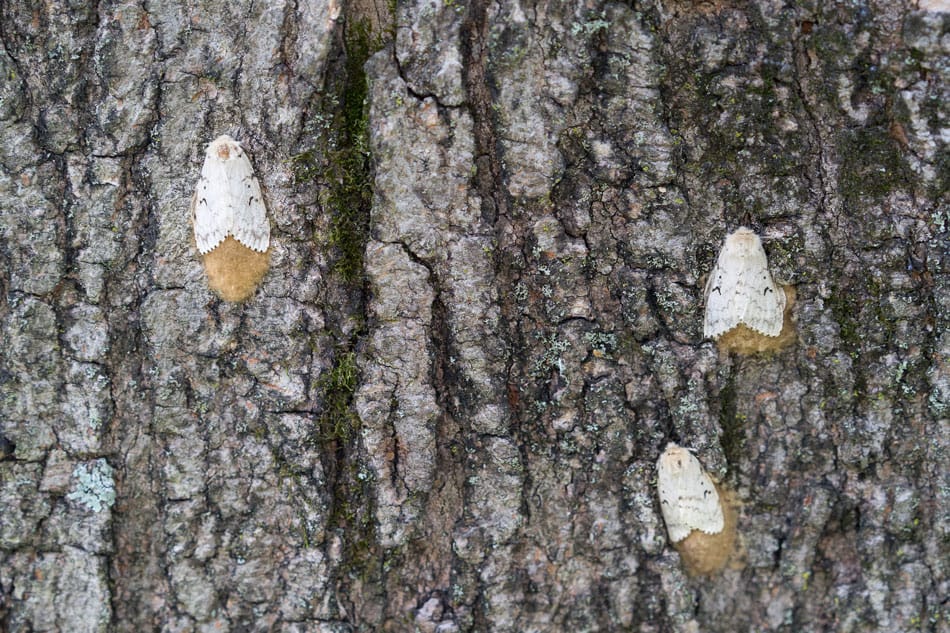Gypsy moth (Lymantria dispar) is one of the most destructive forest insect pests to infect New Jersey and Pennsylvania forests. Repeated defoliation by gypsy moths represents a serious threat to woodland and shade trees.
Introduced accidentally from France about 120 years ago, gypsy moth damage tends to rise and fall in terms of severely destructive populations. Weather conditions and natural enemies play an important role in helping to limit damaging outbreaks, but occasionally levels warrant integrated pest management (IPM) measures.
The gypsy moth caterpillar has a voracious appetite and is capable of dining on over 500 species of trees and shrubs. The leaves of most oak species are among its favorites.
Inspecting trees and shrubs for egg masses, as well as outbuildings, woodpiles, fences, rocks, and gardens, can help determine early stages of population density increases.

Gypsy moths cause extensive damage and can completely defoliate a tree
Gypsy Moth Spreads Quickly
Gypsy moth can multiply from a few hundred caterpillars to destructive levels in one or two years.
State regulatory agencies monitor for gypsy moth annually, however, scientists cannot always accurately predict exactly where and when populations will expand. Closely monitoring egg masses in the fall, and using a combination of biological, mechanical, and chemical strategies is the best approach to keeping populations below destructive levels.
Gypsy moth caterpillars will begin to emerge by mid-April and may feed for up to two months on tree leaves before entering their pupal stage. The key to minimizing gypsy moth impact is to apply the appropriate management strategy when the caterpillars are at specific stages (or sizes) of their development.

Female gypsy moths laying eggs. Removing egg masses (by scraping) is tedious but effective in reducing gypsy moth populations.
Treatment & Prevention
Because of the substantial increase in egg masses observed in the fall of 2016, the NJ Department of Agriculture has proposed aerial spraying of more than 20,000 acres in 27 municipalities and county park systems in Cape May, Salem, Hunterdon, Morris, Passaic, Sussex and Warren counties.
Organic application of Bt (Bacillus thuringiensis) at the early instar stages is effective in suppressing damage to shade and ornamental trees. The moth (or adult stage) lasts for the shortest period but can be an extreme nuisance to homeowners. Spraying the most impacted areas can minimize tree damage by caterpillars and reduce the subsequent nuisance of adult moths.
Restrict your use of broad-spectrum insecticides to avoid harm to beneficial predatory insects and small mammals, who often feed on gypsy moth caterpillars and pupae.
We can help survey your property and the area surrounding your property for gypsy moth egg masses. In determining damaging thresholds, it’s important to be able to distinguish between old and new egg masses.
If your gypsy moth problem was bad last year, there’s a good chance you may need to treat your property this year.
Contact us to schedule a free inspection or call us at (908) 309-6611.
GET THE LATEST NEWS
Subscribe to the Organic Plant Care Newsletter and get timely and helpful tips and updates monthly.
There's no spam - we promise!





